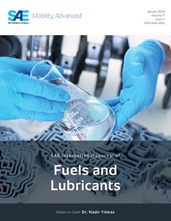Fuel Economy: From Niche to Status-Quo Manufacturing
- Event
- Content
- Whether society chooses energy security or climate change as its motivation, the level of United States motor gasoline consumption and its current growth rate must change drastically. Models for calculating light duty vehicle’s fuel economy incorporate many vehicle-based parameters: 20 to 200 with some being proprietary and challenging for policy makers to acquire or use. This paper describes a MatLab-based simulation model, MINPAR, which uses the three critical vehicle-based parameters: mass, engine size, and transmission characteristic. It is used to model over one thousand 1986 and 2004 United States offered vehicles from the EPA Test Car list (cars and light trucks) and four hundred 2004 Japanese offered vehicles’ fuel economy (FE). Offered vehicles consist of vehicle models and their different configurations. Status-quo vehicles are defined as offered vehicles modeled well with MINPAR by comparing modeled to measured fuel economies. Status-quo vehicles are modeled accurately and represent over 95% sales. Niche vehicles are defined using an easily understood and interpreted percent error methodology. Physically-defined niche vehicle configurations mirror economic realities of niche markets (5% of total final sales market). By separating the high FE versus extreme power niche vehicle designs, a pattern emerges between (1) US 1986 versus 2004 and (2) US 2004 versus Japan 2004. Through Japanese policy, five of the top ten vehicle sellers in Japan are high fuel economic Kei vehicles. Whether the United States can accomplish anything similar or whether the Reformed CAFE policies open the door to create a next generation loophole in terms of alternative fuel or plug-in hybrid/electric vehicles is discussed.
- Pages
- 14
- Citation
- Mechtenberg, A., "Fuel Economy: From Niche to Status-Quo Manufacturing," SAE Int. J. Fuels Lubr. 2(1):104-117, 2009, https://doi.org/10.4271/2009-01-0314.
